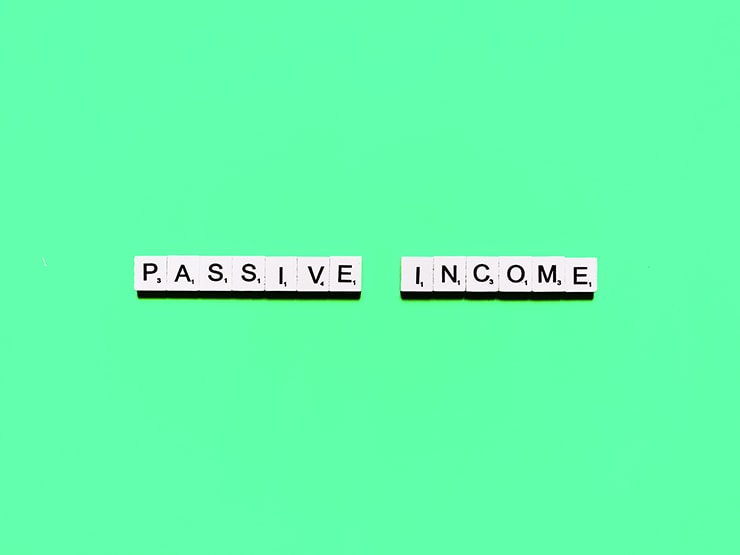
Before you invest in the stock market, you’d naturally like to get familiar with two very distinct styles of investing; dividend and growth investing.
You’re definitely in the right place as in this article, I will:
- give you a clear definition of each investment style,
- explain what each of them entails,
- outline the main differences between the two, and
- help you decide which is more fitting to your needs and personality
After all, there is so much confusion around the dividend vs growth investing debate that newcomers struggle to understand what’s best for them and can often be misdirected. So, an objective look at the topic is much needed.
First of all, let’s define dividend investing…
Dividend Investing

Dividend investing is an investment approach mainly concerned with companies that distribute high dividends to their shareholders. A dividend is simply a portion of a company’s earnings that the managers decide to hand out to shareholders.
In other words, a dividend-oriented investor aims to buy stock in companies that are more generous with distributing a portion of their profits to their shareholders than the average corporation.
Many people think that this is a quite dull approach to investing when compared with investing in highly speculative stocks which offer no dividend, but grow in earnings and price much faster.
Dull as it may seem, it can pay well for many who are serious about investing. Investing isn’t supposed to be a crazy roller-coaster ride anyway. It’s about keeping ahead of inflation and consistently growing your wealth.
Besides, if you decide to invest the dividends you receive from companies back into them, you may realize a high return on your investment over the long-term that even speculators will envy.
Now, the first question that pops in many people’s minds is: “how do I identify a dividend stock?”
Well, you can begin by getting familiar with the 2 most important metrics related to dividend investing…
Dividend Yield

The dividend yield is the amount of the dividend the company pays out in relation to the price you will pay for a share and it’s expressed as a percentage.
For example, if the dividend is $2 per share and the price of one share is $100, then the dividend yield is 2% ($2 / $100).
The dividend yield is a great place to start when looking for dividend stocks as it shows you how much you will be paying for the dividend if you were to buy shares in a company.
Payout Ratio
The payout ratio is the portion of the earnings a company pays out as a dividend and is too expressed as a percentage.
Example: If a company has had earnings of $100,000,000 and they distribute $25,000,000 as dividends to shareholders, then the payout ratio is 25% ($25,000,000 / $100,000,000).
The payout ratio is an important measure of dividends because if a company is growing in earnings the dividend will naturally keep getting higher. So, it pays to pay attention to it if you think the company will keep increasing their earnings in the future.
Now, speaking of earnings growth…
Growth Investing
Growth investing is an approach appropriate to those who seek above-average earnings growth.
At its core, growth investing is nothing else than buying shares in companies who seem good candidates for growing their profits year after year much higher than the market as a whole does.
As this may seem like an oversimplification of growth investing, let me also add that growth investors also pay attention to qualitative factors such as management, market positioning, and product launches to determine the room for earnings growth.
But growth investors, just like dividend investors, also pay attention to some objective data that metrics reveal. Let’s take a brief look at 3 of them…
EPS Growth
The EPS (earnings per share) growth shows how much the earnings per share of a company grew over a certain period of time.
I will not offer definite guidelines as to what kind of period you should measure EPS growth in because everyone’s investment horizon differs.
If you are a long-term investor, an EPS growth rate over the last two years may not be enough data. Likewise, if you’re not planning on holding a stock for much more than a year, going over the last 10 years of EPS growth may be irrelevant to your purposes; and a waste of time.
Profit Margin Growth
The profit margin is the portion of the revenue figure that ends up as net income and it is expressed as a percentage.
For example, if a company generates $5 billion in sales and after all expenses and taxes are taken care of they end up with a net profit of $1 billion, then the profit margin is said to be 20%.
One popular way to determine if a stock is a growth one is to look at whether the company’s profit margin has increased more than that of its competitors. You can of course do a comparison with the market average EPS growth as well.
Book Value Growth
Another great way to assess if a company has been growing more and faster than its competitors is to look at the book value growth.
The book value, also called equity, is what remains after subtracting all the liabilities from the total assets of the company. If book value is growing, then the company is also growing. If it’s shrinking, then the company is shrinking as well.
So, comparing the book value growth to the industrial or the market average can reveal whether you’re dealing with a company that grows faster than the others or not.
The Main Differences Between Dividend vs Growth Stocks
Now that you have a general idea of what the two investment approaches are about, let’s take a look at the most basic differences between the two:
- Dividend stocks can deliver cash periodically while growth investing usually pays off once you liquidate your position
- Dividend stocks tend to release a large portion of income “in excess” while growth stocks usually pay no dividend and reinvest any excess cash for future growth
- Dividend stocks are more attractive to conservative investors looking to preserve their wealth while growth stocks are likely to mainly attract the attention of less risk-averse investors
- Dividend investing is more appropriate to those who are looking for a constant stream of income that they can reinvest elsewhere while growth investing is appealing to those who are in no hurry to be rewarded for their investment
Let’s see now which approach you should choose…
Dividend vs Growth Investing: Which Approach Would Be Better for You?
After you take into account the above list of the things that can make either approach attractive to you, then you might be in a position to decide which one you should go with.
If you need a constant stream of passive income and you don’t care much about price appreciation, then dividend stocks are probably for you. If you can live with the fact you will likely be paid no or too low a dividend and are all about getting the highest return in the fastest period of time, then growth stocks should be the better choice.
But honestly? It shouldn’t be that black and white…
Since serious long-term investing will take a look at all of the factors that contribute to a stock’s attractiveness, the question should not be about which approach you should choose. Rather, it should be about which you will give priority to over the other.
Because let’s be honest. Both the growth of the company and that of its dividend are important factors when investing.
Many argue that you shouldn’t care about dividends because the managers will know how to reinvest excess cash to provide more value to you than you could get by deciding how to use that cash.
But let’s not forget that managers’ competence varies across companies and also across time. In other words, even if you find a company that is run by competent people, you cannot predict that it will never be run by incompetent ones.
So, maybe you should learn to pay attention to both factors and decide where you should put more weight based on what’s more important to your goals and personality.
Now, I hope this dividend vs growth investing comparison shed some light on the topic and you’re ready to go into more depth regarding either investment style.
I also hope that you enjoyed it and it would mean a lot to me if you shared it with others.
By the way, don’t hesitate to leave a comment if you have any questions and I will try to answer as soon as possible.
Take care and invest wisely…
Disclaimer: This information should not be viewed as financial advice. You should consult a financial advisor or do your own due diligence before you invest. The owner of this website and author of this article are not to be held liable for any undesired result by anyone who uses this information that is provided here in any way.

